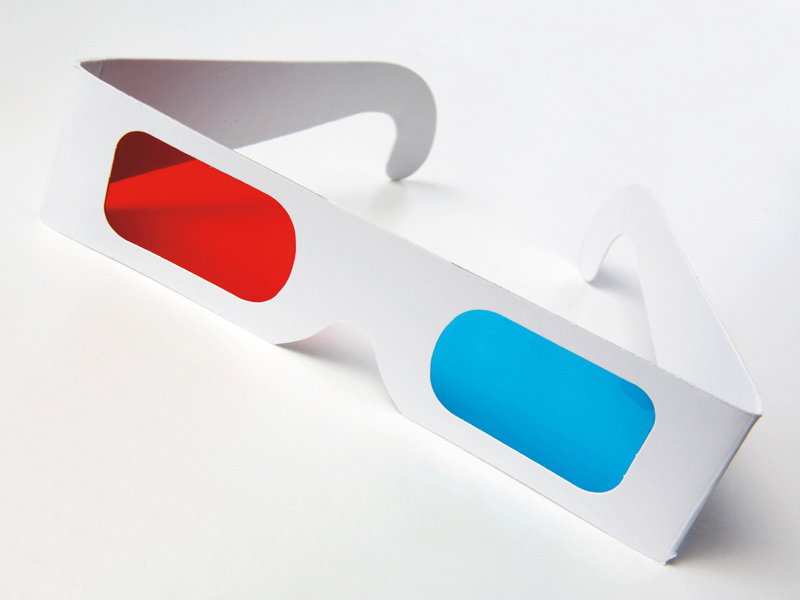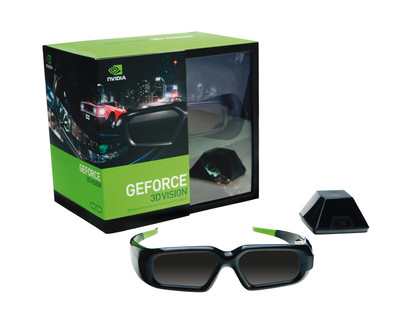Is 2010 the year for 3D TV, games and movies?

The future is here – and it's looking pretty. I'm sitting in a darkened room at Sky's HQ in West London, peering through a pair of polarised glasses at television's next evolutionary step - 3D TV.
In front of me is a 46in JVC 3D TV displaying a show reel of Sky's best efforts in the brave new world of 3D entertainment. It's impressive.
The action appears to be happening an inch or so behind the razor-thin bezel of the TV, then telescoping off into the distance. There's a real sensation of depth.
With Sky's Senior Product Development Manager John Dollin, I watch clips of a Champions' League game, a boxing match featuring Ricky Hatton and a spot of rugby. The ball zooms into the screen from the corners and the players run convincingly in front of the distant stands.
"All the investment we did in 2005 and 2006, when we did HD, is what enables us to do 3D. We're just piggybacking off that," Dollin says. The changes Sky needed to make to its broadcast technology to offer 3D channels were "small and incremental", and it plans to launch its first 3D offering in 2010.
The three dimensional clouds are gathering into the perfect storm. In December 2009, it was announced that 3D Blu-ray discs will be available from this summer. Graphics card manufacturer Nvidia already markets a 3D solution for PC gamers, complete with a high-spec monitor and 3D glasses. Even better, the tech works, and big-name manufacturers and content producers are getting in on the act.

"Every single [television] manufacturer you can think of has a 3D TV coming out," says Dollin. But promises of a 3D future are all too familiar.
Sign up for breaking news, reviews, opinion, top tech deals, and more.
Since the advent of 3D cinema in the early '50s, entertainment companies have sporadically announced that the future is 3D – and it's arriving soon. Whether it was House of Wax in the '50s or the 1983 box office smash Jaws 3D, the future has worn silly glasses for as long as most of us can remember.
What makes this time any different, and how is the entertainment industry going to make 3D stick?
How 3D TV works
Happily, 3D technology has progressed beyond recognition since the days of glasses made of cardboard and red and blue cellophane. The only constant is how we detect depth – each eye sees a slightly different image and the brain merges them together.
Flatscreens use a little trickery to display a 3D image: each eye is fed a different picture by filtering out light, and the brain is fooled into providing information about an image's depth.
One of the oldest – and least commercially successful – tricks in the book is adding red and blue tints to a pair of images and displaying them simultaneously. Known as anaglyph 3D, a pair of coloured glasses filter out either the blue or red channel, tricking the brain into thinking that it's seeing different perspectives. However, the technology isn't that impressive visually, and anaglyph has failed to find favour with the new wave of 3D technology.

Now there are two frontrunners. The first is known as passive polarisation, and it's what Sky is demonstrating. Footage is shot using two cameras that are placed in slightly different positions but converge on a single focal point – like your eyes. It then broadcasts two images, each 960 x 960 in size.
These are stretched across a special HDTV with what Dollin calls a "pixel perfect" polarising filter across it. Finally, a pair of polarised glasses filter out light line by line, providing your eyes with slightly different images and your brain with enough information to build a 3D image.
The advantage is that the glasses are cheap, making them perfect for Sky's initial intended audience of pub-goers. Dollin also says that the 3D image can be received by all of Sky's 1.6 million Sky HD subscribers without the need for a new decoder box.
The second approach is more accessible for PC users. It doesn't require a polarised screen – just a monitor or a TV capable of running at 120Hz or faster. Instead of showing two perspectives at once, the display flickers between them.
Light is filtered out by a pair of active shutter glasses that have LCD crystals for lenses. When a charge is applied to each lens, it blacks out for a fraction of a second, perfectly in sync with the image that the screen is showing thanks to a transmitter connected to the display.
This means the screen is a little cheaper – ViewSonic's 22in 120Hz VX2268wm display costs just over £200. However, the glasses are far more complex than Sky's passive solution. Nvidia's 3D Vision set – which comprises just one pair of glasses and a wireless transmitter – costs just over £100.